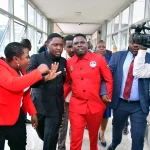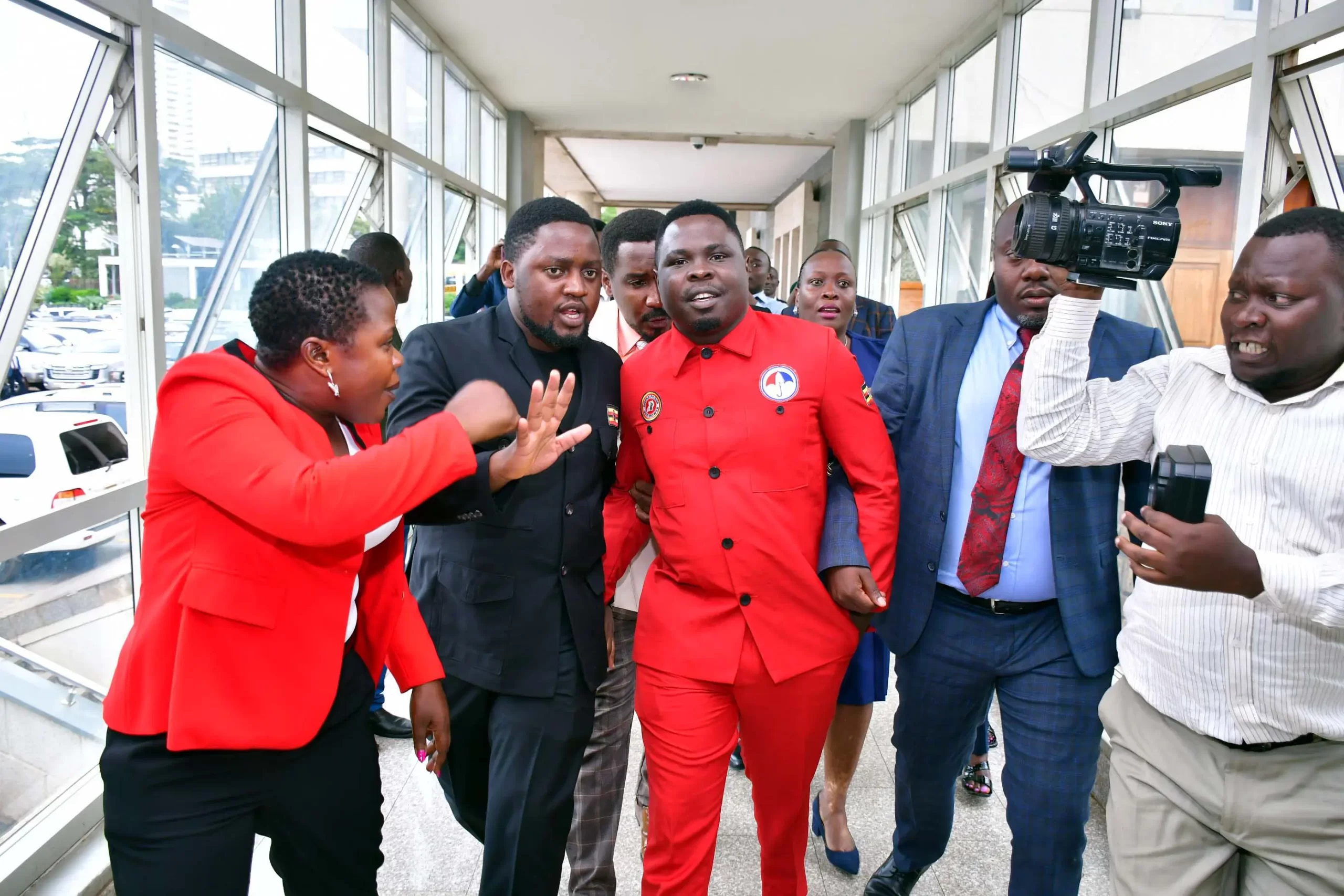On a wall at Namugongo, at the spot where 26 young Christian converts were burned alive 138 years ago, is a painting.
This painting at the entrance to the Chapel at the Church of Uganda site captures, in a significant way, the ecumenical story of the Uganda Martyrs.
The painting has five men in the frame. Top left is Reverend Alexander Mackay, a 29-year-old British missionary priest, who after coming to Uganda in November 1878 played a significant role in establishing the church – mentoring the young converts and laying the ground work for the translation of the Bible.
Unfortunately, malaria cut him down in February 1890. But by this time the seed of the Christian Church in Uganda had been planted and the blood of the Martyrs had watered it to overcome all and grow.
Three of Mackay’s catechumens – Makko Kakumba, Yusuf Rugarama and Nuwa Serwanga – had become the first Christian converts to be killed in Uganda at Busega-Nateete on 31 January 1885, triggering the most difficult period of persecution for the young Church in Uganda. This climaxed with the Namugongo inferno seventeen months later, on 3 June 1886.
The wall painting has, on the right, Father Simeon Lourdel commonly known as Mapeera, a young French Catholic priest who arrived in Uganda in February 1879. He too died of Malaria in May 1890, just three months after Mackay.
Between them, these two men converted most of the young Christians (both Anglican and Catholic) who would die in the most painful way imaginable while defending their newly found faith in Jesus.
Back to the painting at Namugongo. In the middle, sandwiched by Reverend Mackay on the left and Father Mapeera on the right, is Reverend Canon Apolo Kivebulaya, a Christian convert and evangelist of note. He was a Muganda of Nubian origin.
The story of the Church in Tooro and especially in Congo cannot be told without the name Kivebulaya in it. He played a leading role in evangelizing these areas. Of course being joined by other notable evangelists such as future Bishop Aberi Balya, Reverend Yosiya Kamuhiigi, Reverend Azaliya Mutazindwa and Henry Maddox among others.
Canon Kivebulaya died in May 1933 in present day Democratic Republic of Congo. He had requested to be buried in Congo among the “people of the forest” whom he was evangelizing.
He also wanted his body to be laid to rest with the head facing the forest. This, he said, was a sign that he wished to continue going deeper into the forests and preaching the word even though his mortal body was no more. At least his spirit would continue with the journey.
The painting has two more men who have shaped the Church in Uganda in different but significant ways. One of them is Tefiro Kisosonkole, a Chief in Buganda whose personal story is more connected to the Uganda Martyrs than anyone else’s.
First, Kisosonkole’s father was a chief and land owner during the reign of Muteesa I. As such, Kisosonkole earned the right to serve as a page at the court of Muteesa’s successor, Mwanga II. He was, therefore, among the first young Anglican converts or “readers” (Abasomi).
When the killings of the converts started, Kisosonkole feared the worst. He ran away from the palace and into hiding. His companions were arrested, marched to Namugongo and burnt.
In all, some 45 Christian coverts were killed between 31 January 1885 and 27 January 1887. For decades, the Anglican Church has recognized 23 young men while the Catholic Church canonized and recognizes 22 young men. This brings the number to 45 Uganda Martyrs.
But there’s a 46th martyr! Kalala (Clara) Nalumansi was Kabaka Mwanga’s own sister. A princess at the heart of Buganda Kingdom who challenged the King and traditions to embrace the new religion. First, she became a Muslim. After failing to find peace there, Nalumansi is said to have converted to Catholic faith.
This, coming after the 45 converts had been killed, was a bold attempt by Nalumansi to challenge the authority on matters of faith. In August 1888, a year and seven months after the last male convert had been killed in January 1887, Nalumansi was attacked and shot dead at her residence in present day Bwaise area in Kampala.
Was Kisosonkole’s survival meant to serve another role in the life of the Church? We shall see.
Thanks to his family history, Kisosonkole continued to play a role, serving Buganda Kingdom in a changing world. He became a chief and acquired more land. But his Christian faith also continued to grow.
It was Kisosonkole who collected the scattered relics of the Martyrs that had remained abandoned at Namugongo for years and buried them in a mass grave at the spot of the pier whose fire had consumed them in June 1886. It was Kisosonkole who built a chapel at the same spot with the mass grave forming part of the Altar.
The names of all the 26 converts, both Anglican and Catholic, who were burnt on 3 June 1886, are engraved on the marble stone of the mass grave, at the Altar of the chapel.
Kisosonkole did not stop there. He donated the land on which the Church of Uganda site at Namugongo, including the museum, sits today. In total, he donated 48 acres of land. He donated another 49 acres of land to the Catholics.
This same Kisosonkole later rose to the position of Katikkiro of Buganda, replacing Sir Apollo Kaggwa in 1927 and serving until 1929. Two of his daughters, Damali Nakawombe and Sarah Nalule, got married to Kabaka Edward Muleesa II. Sarah Nalule is the mother of the current Kabaka, Ronald Muwenda Mutebi II.
So, Kisosonkole might have survived the fire at Namugongo so as to serve the church and humanity in another way. He died in 1945.
Returning to the painting one more time. The last man in the frame is Livingstone Mpalanyi Nkoyoyo, a powerful preacher who served as the Archbishop of the Church of Uganda from 1995 to 2004.
It was Archbishop Nkoyoyo, after retirement, who sourced for funding to build the Uganda Martyrs Museum at the Church of Uganda site. It was him who wanted paintings such as the one we are talking about to depict the story of the Uganda Martyrs as an ecumenical story. Archbishop Nkoyoyo died in January 2018.
When you feel like telling the story of 1000 words, about the Uganda Martyrs, just wake up and look at this painting at Namugongo.










